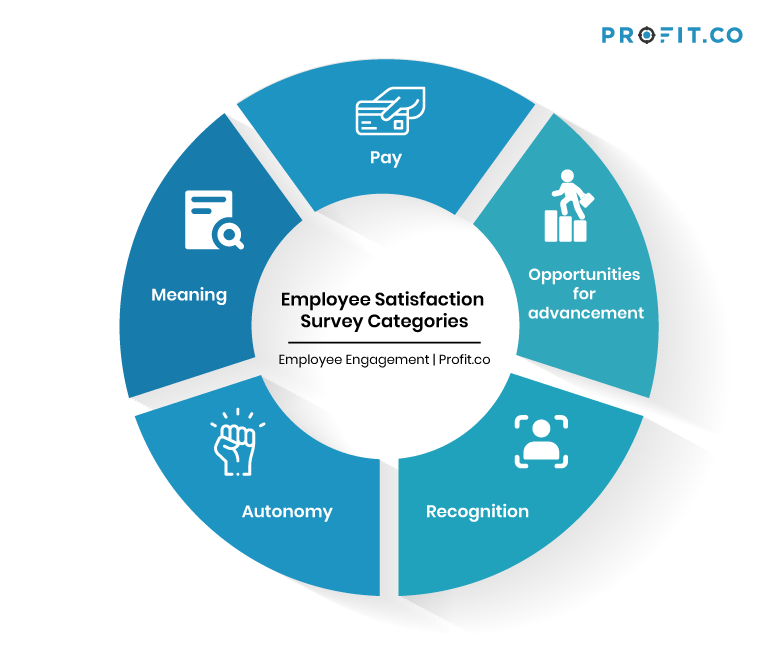You may not be aware of it, but most employees are happy to be at work. According to a recent survey, 85% of survey participants indicated they felt satisfied with their jobs. That said, only 9% of the respondents gave high ratings in every survey category.
What can employers do to make the grade with staff?
You might think implementing casual dress Fridays, allowing pets at work, and on-site yoga classes will create happiness at work. But according to research, it takes more than perks! Creating an environment where happiness reigns high starts with understanding job satisfaction and how it impacts success in the workplace.
It’s not how much money we make that ultimately makes us happy between 9 and 5. It’s whether or not our work fulfills us.
Job Satisfaction Defined
Unlike many other aspects of work, it’s a challenge to use metrics to define job satisfaction. It’s unquantifiable, although most employers use surveys in an attempt to measure contentment at work.
If you boil it down to one sentence, satisfaction at work is a positive emotional response people feel when doing their job. And therein lies the challenge!
Emotions are so personal that what makes one person feel positive about their work doesn’t necessarily apply to other employees. Companies that take a multi-dimensional approach to employee satisfaction will be more successful at helping employees feel good about their jobs.
Even if you can’t use exact metrics to measure employee happiness, employee engagement or job satisfaction surveys can still reveal much about employee attitudes and clue you in to what areas your company needs to focus on more.
What Pieces Complete Happy Employee Puzzle?
If you look at enough job satisfaction surveys, you’ll notice not all surveys include the same categories. Five common categories used in surveys measuring employee satisfaction include:
- Pay
- Opportunities for advancement
- Recognition
- Autonomy
- Meaning

Survey categories may also include praise and recognition, work/life balance, relationships with co-workers, trust, and flexibility.
The nature of your workplace determines how your employees define satisfaction with their work. For example, a satisfied employee in education looks quite different from one working in the technology, retail, or government sectors.
Even so, there are components common to every job sector, and ways that you can modify your workplace to increase employee satisfaction.
How to Create a Workplace Geared Toward Satisfaction
As we’ve said, job satisfaction is not a one-dimensional concept. To help define job satisfaction, employers in any field can use answers to the following questions:
- Does the nature of the work you give employees challenge them?
- Is the work meaningful?
- How convenient do you make it for staff to work for you?
- Does your organization show regular appreciation of the work your employees do?
- How often does management show appreciation to their teams?
- How competitive is pay at your company?
- Do you offer opportunities for advancement?
Some of these components are more challenging to address than others. For example, you can offer meaningful work, but not every employee will look at their work as purposeful or challenging.
As far as convenience, some employees will have an easier time getting to work than others. You can provide the latest digital tools, ergonomic workspaces, and other niceties designed to make work more convenient, but you’ll never make all employees happy all the time.
Showing appreciation is one of the easiest things your organization can implement to create a satisfaction-geared workplace. It takes minimal effort to recognize the efforts of your staff, but the payoffs are significant.
Pay and Meaningful Work
Most people assume a direct correlation between pay rate, job satisfaction, and performance. The CNBC Workplace Happiness Index survey reveals only 25% of respondents felt very satisfied with their pay. An even more significant percentage (41%) ranked higher pay as the one component that would improve work satisfaction.
Undoubtedly, fair pay motivates, but it’s not first and foremost in every employee’s mind.
Best-selling author Malcolm Gladwell says, “It’s not how much money we make that ultimately makes us happy between 9 and 5. It’s whether or not our work fulfills us.” As mentioned in the previous section, an employer can offer what they consider meaningful work, but that doesn’t mean every employee will see the meaning.
You can gauge whether work is meaningful by assessing three core components:
- Has significance and purpose
- It helps a person find broader meaning in life
- Contributes to the greater good
According to Michael Steger, Founder and Director of the Center for Meaning and Purpose and Professor of Psychology at Colorado State University, “meaningful work is a good predictor of job satisfaction.” It’s also an excellent predictor of workplace absenteeism.
Positive Impact on the Workplace
Not feeling appreciated and engaged in work are two primary reasons employees leave their jobs. Of course, people also go elsewhere for a higher paycheck, but dissatisfaction is the underlying cause of employee turnover.
When your staff feels satisfied with their work, you’ll know it. Just ask Google, Tesla, and LinkedIn—each of these companies invests heavily in employee happiness. As a result, they’ve achieved rapid growth and higher productivity than other companies.
Unfortunately, they may not do as well in the area of employee retention.
One company, CarMax, seems to have unlocked the secret to low employee turnover. During recent hard times experienced by just about every employment sector, CarMax committed to investing in employee training and development programs. As a result, they enabled more employees to earn raises and promotions.
When companies like CarMax focus on employee satisfaction, they have more engaged staff. Employee engagement leads to 24%-59% less turnover.
How to Boost Job Satisfaction
If your latest job satisfaction surveys indicate a high level of employee dissatisfaction, there are steps you can take to improve the numbers. Work on the categories your employees rank as the most significant factors in determining how unhappy they are with their work.
Whether it’s lack of recognition, lack of trust between management and staff, or perception of unfair compensation, you can develop a plan to make your workplace the best workplace. In return, you’ll have happier, more productive employees. And, perhaps you can compete with CarMax and other companies that enjoy a low rate of employee turnover.
Final Thoughts
Investing in making sure that your employees are satisfied in their positions at your company and taking the time to measure job satisfaction is an important part of helping employees succeed at work.
While there are some things that employees simply can’t change or control, there are ways to help boost your employees satisfaction with their job, like rewarding them for work well done, instituting employee development programs, and recognizing people for their contributions to the organization.

